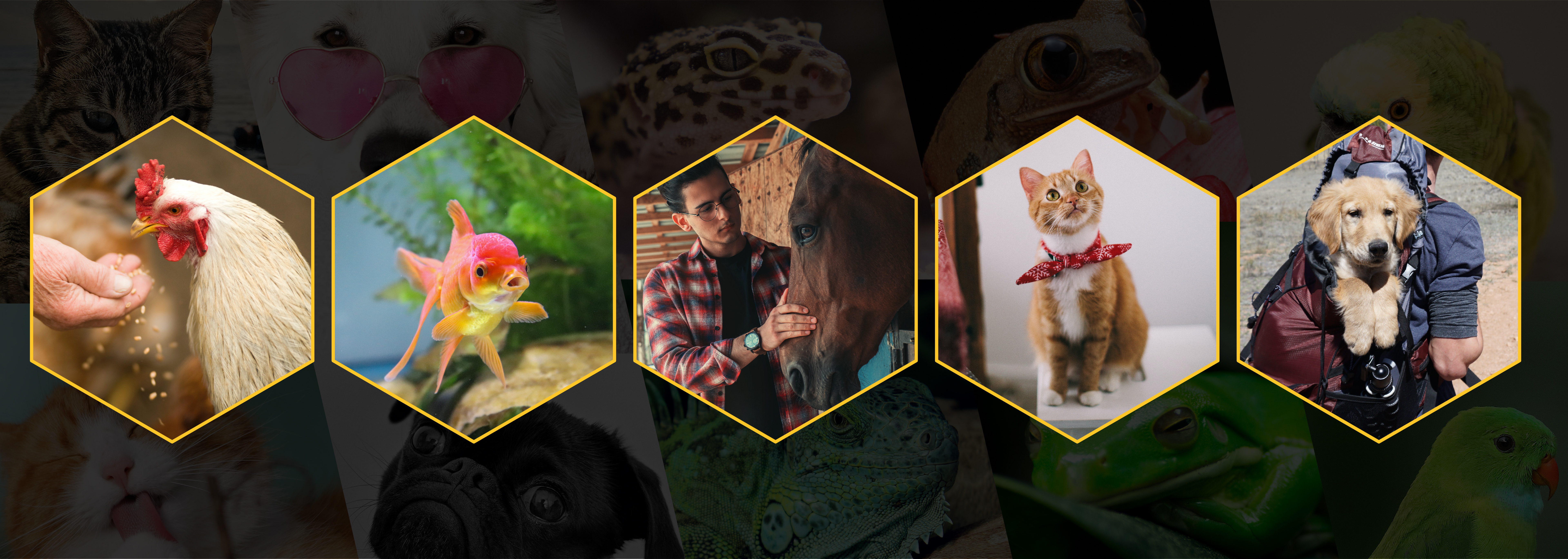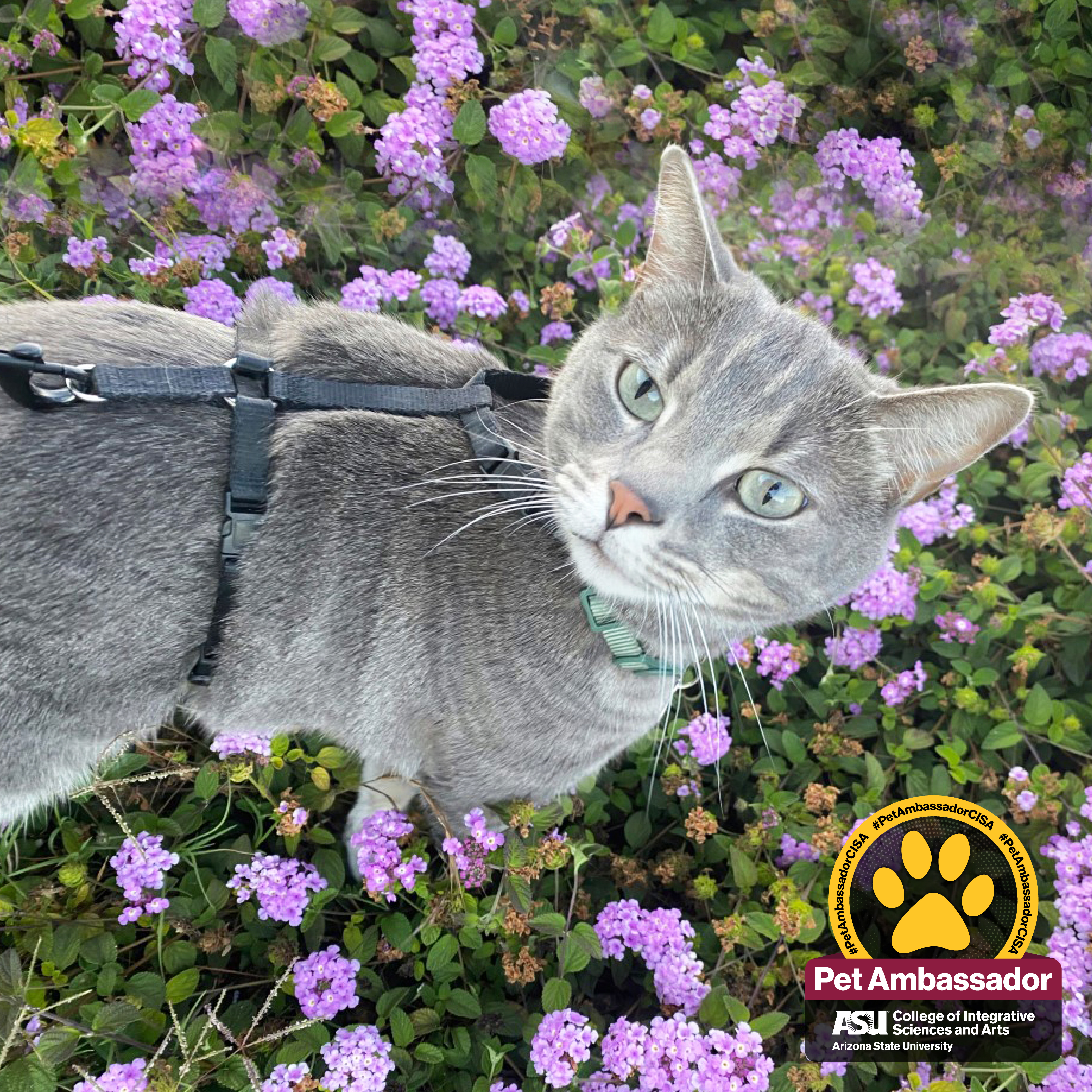
CISA Pet Ambassador Program

Follow Sage on Instagram: @sagaatin
Saving Sage
Sage is a 4-year-old domestic shorthair cat who found his forever home in the nick of time.
Pre-veterinary student Carla was on her way to class when she got an urgent call from her sister. They had found a kitten in an empty lot and he was in bad shape.
Carla jumped into action, turned her car around and headed back home.
Sage was only about 6 weeks old when he was found. He was skinny and lethargic and Carla wasn't sure he'd make it through the night. She put everything aside and he became her priority. She bathed him, fed him wet kitten food and gave him water. That first night he slept on her chest and as she felt him breathing, she knew if this brave kitten survived, they were meant to be together.
He did, indeed, survive the night and every day after he got stronger. His bright, playful personality and his meow that sounded like he was saying "mama" made him hard not to love. Soon Carla's entire family fell head over heels for Sage, too.
Sage is not Carla's family's first cat. They raised a few over the years, but those had been exclusively outdoor cats — and all met tragic endings. The family decided that Sage would be different, and they welcomed this kitten to be the first to live indoors with them.
Carla and Sage's bond has only grown over the years, and even though it's clear that Carla rescued Sage, Carla believes Sage saved her as well.
Indoor vs. outdoor cats
Commentary by veterinarian Dr. Sarah Churgin, Clinical Assistant Professor of Animal Health, College of Integrative Sciences and Arts, ASU Polytechnic campus.
Carla’s family decided to make Sage an indoor cat to keep him safe after his initial rough start to life. This is a great decision that families can make not only to protect their own pets but also to protect native wildlife.
At first glance, new cat owners might worry that keeping their cat indoors is unnatural or takes away their cat’s ability to follow instincts like hunting and playing. However, many owners don’t realize that outdoor cats face far more threats to their physical health. Cats that roam outdoors are much more likely to be involved in a deadly accident with a vehicle but can also be injured during fights with other animals or sustain wounds from hazards like barbed wire fences. Outdoor cats are also at much higher risk of contracting infectious diseases like feline immunodeficiency virus (FIV), feline leukemia virus (FeLV), and rabies. If cats aren’t spayed or neutered, they are more likely to roam long distances from their home, putting them at higher risk of vehicular accidents. Keeping them safely indoors is truly far more beneficial to your cat’s welfare.
It has also become evident in recent years that outdoor domestic cats pose a very high risk to native wildlife populations. In fact, the American Bird Conservancy reports that predation by domestic cats is the #1 human-mitigated risk to wild birds in the U.S., and cats kill an astounding 2.4 billion birds per year! This majorly impacts bird populations and is another important reason to consider keeping your kitty indoors.
There’s no question that outdoor cats get more environmental stimulation than indoor kitties – unless you do a little extra work to enrich your cat’s environment. The Ohio State University’s College of Veterinary Medicine has a great program called the Indoor Pet Initiative that provides cat owners with many ideas for promoting feline wellness indoors. Creativity and DIY projects are all that’s really needed to fill your cat’s indoor space with fun, challenging, enriching activities that would mirror what they would find outdoors. (Check out their webpage for ideas.)
It’s great to hear the beautiful story of Sage’s rescue and his close bond with Carla. He certainly has all the best creature comforts now as a safe, warm and well-cared-for indoor kitty.

